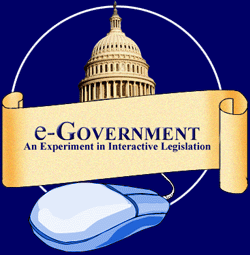
The e-Government projects are:
1. Electronic Procurement (EP),
2. Project Monitoring System (PMS),
3. Electronic Services Delivery(eServices),
4. Human Resource Management Information System (HRMIS),
5. Generic Office Environment (GOE),
6. E-Syariah and Electronic Labour Exchange (ELX).
Besides these seven main projects under e-government flagships, several government
agencies has taken initiatives to introduced online services for the public projects,
aims to increase the ease and efficiency of public service to the people. Among others
were Public Services Portal (myGovernment), e-Tanah, e-Consent, e-Filing, e-Local
Government (e-PBT), e-Kehakiman, Custom Information System (SMK), Pensions
Online Workflow Environment (POWER), and Training Information System (e-SILA).

MALAYSIA
1. Electronic Procurement (eP) Project
The electronic procurement system, better known as ePerolehan, streamlines government procurement activities and improves the quality of service it provides. ePerolehan converts traditional procurement processes in the Government machinery to electronic procurement on the Internet and can be accessed at www.eperolehan.com.my.
2. Project Monitoring System (PMS II)
Project Monitoring System (PMS) is led by the Implementation and Co-ordination Unit (ICU) as one of the e-government projects that create a mechanism to monitor project implementation throughout various government agencies and statutory bodies i.e. from project application to approval to implementation, mid-term review and completion.
PMS would also provide a platform for exchanging ideas and demonstrating best
practices in project implementation. The PMS is designed to provide a mechanism for
monitoring the implementation of government projects.
3. Electronic Services Directory (eServices)
The next e-government project is Electronic Services Delivery (eServices). This
project is a pilot project that allows citizens of Malaysia to engage in transactions with government and utilities payments such as telephone and electricity bill, police summons, Road and Transport Department (RTD) services, etc. The eServices is accessed via multi channel service delivery such as the internet, interactive voice response (IVR) and 66 kiosk machines.
4. Human Resource Management Information System (HRMIS)
The introduction of Human Resource Management Information System (HRMIS) as an e-government project will provide a single interface for government employees to perform human resource functions effectively and efficiently. The objective of HRMIS is not just for record keeping but also to provide transactional functions such as leave applications, loan processing, competency management, recruitment, and selection of employees.
5. Generic Office Environment (GOE)
The aim of Generic Office Environment (GOE) is to introduce a fully Integrated, distributed and scalable office environment that leverages use of multimedia information technology This will enable efficient communication, allowing collaboration across all workers, and ensuring right information reaching the right people in a timely manner.
6. Electronic Labour Exchange (ELX)
The main objective of Electronic Labour Exchange (ELX) is to improve the mobilization of human resources and optimize work force utilization through systematic matching of job seekers to job vacancies. As such, this would enable the Ministry of Human Resources (MOHR) to be a one-stop centre for labour market information that will be accessible to the public.
7. E-Syariah
The main objective of implementing E-Syariah is to improve the quality of service in Syariah courts. This will eventually enhance the Islamic Affairs Department's effectiveness through better monitoring and co-ordination of its agencies and thus improve the management of its 102 Syariah courts.
The National Archives (NAM) Response to eGovernment (EG)
The introduction of EG indicates the volume of electronic records created or will be created in Malaysia, thus leaving an impact on recordkeeping particularly electronic records. As government agencies or public offices are involved with electronic records, the NAM reacted in positive and proactively manner to the new challenges it has to face after EG implementation.
For Example:
1. Electronic Records and Information Technology Management (PRETM)
2. The National Archives Act 2003
3. e-SPARK Project
By:
Teng Yann Guan 0701652

























